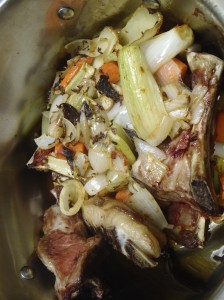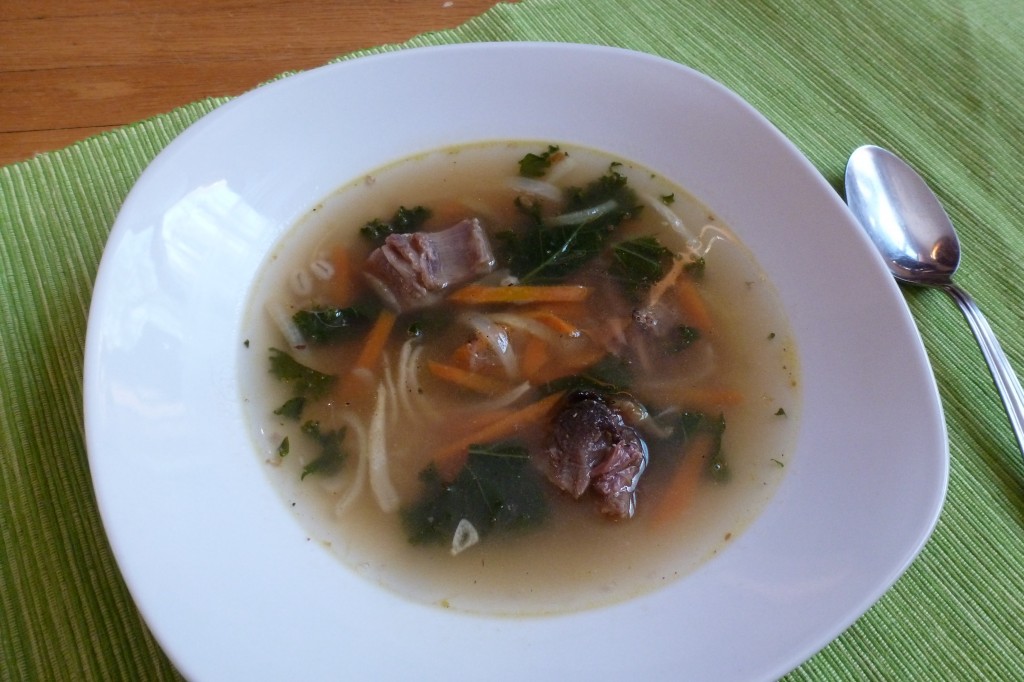 Some would think this is the inside of my compost bin, but it’s actually the inside of my stockpot: roasted lamb bones and vegetables, as well as all the darkly caramelized bits scraped from the bottom of the roasting tray. These flavours formed the soul of the Burns Supper, as the resulting stock was used not only in the soup, but also in the haggis and the clapshot. They were the mellow, earthy foundation of the entire meal.
Some would think this is the inside of my compost bin, but it’s actually the inside of my stockpot: roasted lamb bones and vegetables, as well as all the darkly caramelized bits scraped from the bottom of the roasting tray. These flavours formed the soul of the Burns Supper, as the resulting stock was used not only in the soup, but also in the haggis and the clapshot. They were the mellow, earthy foundation of the entire meal.
Making a pot of stock the night before a large meal has become a very fond tradition. The house fills with the aroma first of roasting bones, then of the simmering stock, while excitement for the coming meal slowly accrues.
Some specifics on the stock. First I roasted lamb bones from Four Whistle Farm. It’s hard to come by good lamb femur bones, I think because of the popularity of leg roasts and shanks. A touch of tomato paste was smeared over the bones for the latter half of the roasting. Then onion, carrot, celery, and garlic were baked. The pans were deglazed with water, and bay and rosemary were added. Finally the whole lot was covered in cold water, brought to a simmer and left overnight.
Barley-Broth, with kale and scrag
The first course of my Burns Suppers is always barley-broth, which in North American is usually called Scotch broth. Vegetable-wise the soup contains onions, kale, and carrots. The pearled barley is cooked in a separate pot so that it doesn’t cloud the stock.
The final garnish is lamb neck, or scrag. Neck is a variety-cut that sounds a lot grosser than it really is: the meat is indistinguishable from that of the shoulder. The necks are seared, braised in some of the lamb stock, cooled, shredded, and added to the soup.

This sounds really good. I'm hungry thinking about it. I have to admit I'm glad the rabbit is not the hopping variety, though.
the barley broth sounds right up my alley at this moment in winter :)
The barley broth looks divine… I actually had the Welsh Rarebit while there… it was mammoth. His bread slice was about 2 inches thick and would cover a large dinner plate. I kid you not. I didn't like his topping. I am glad you did. I have a wide reaching palate, and found the topping gamey. Odd, I know. It was probably the beer. I don't drink it.
:)
Valerie